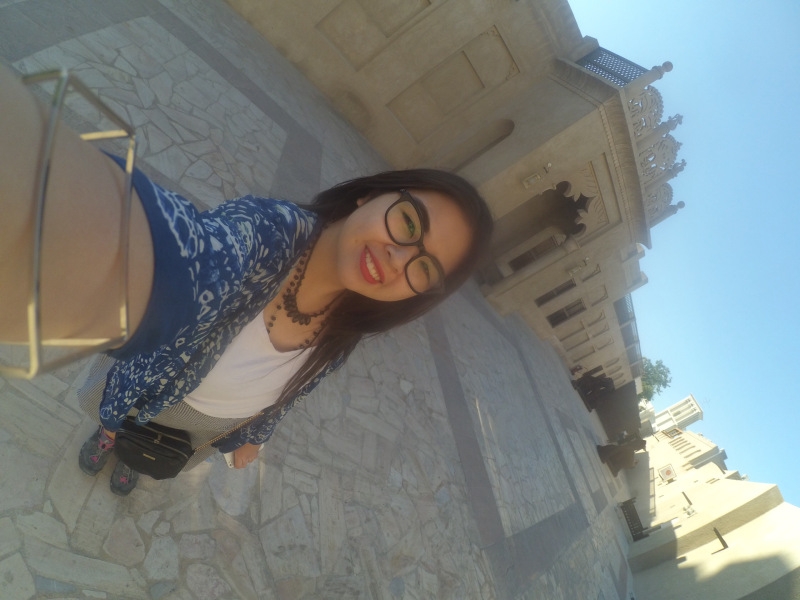Contributed by The Grammar Fuhrerin
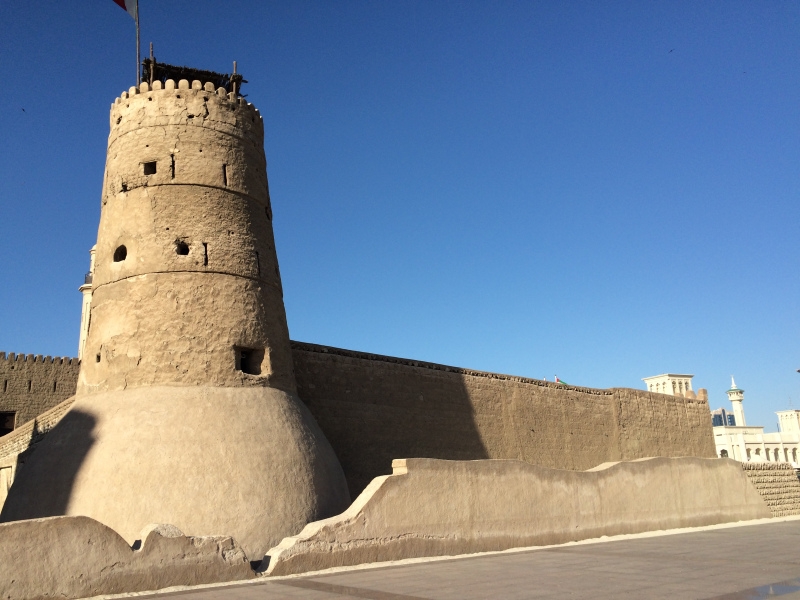
I find that wandering alone can be very therapeutic.
And the beauty of being a barely three-month-old expat is that there are still so many places for me to get lost in here in Dubai.
Last weekend, following a dating hiatus, I decided to explore the historical districts of Al Fahidi and Al Ghubaiba to see Fort Fahidi, Al Bastakiya, and the Textile Souk.
I had already been to the fort-turned-museum last November, but having joined a hop-on-hop-off bus tour at that time, I was not able to explore it as much as I liked.
Because seriously, who spends only twenty minutes in a museum?
Also read: 12 Things to Do in Dubai for An Unforgettable Week
I wanted to learn more about my adoptive city.
Screw Wikipedia when I could see life-size exhibits and thousand-year-old artifacts for a measly three-dirham entrance ticket.
So I took a bus to the Union Metro Station, took a train to Al Fahidi, and then took a cab to the museum.
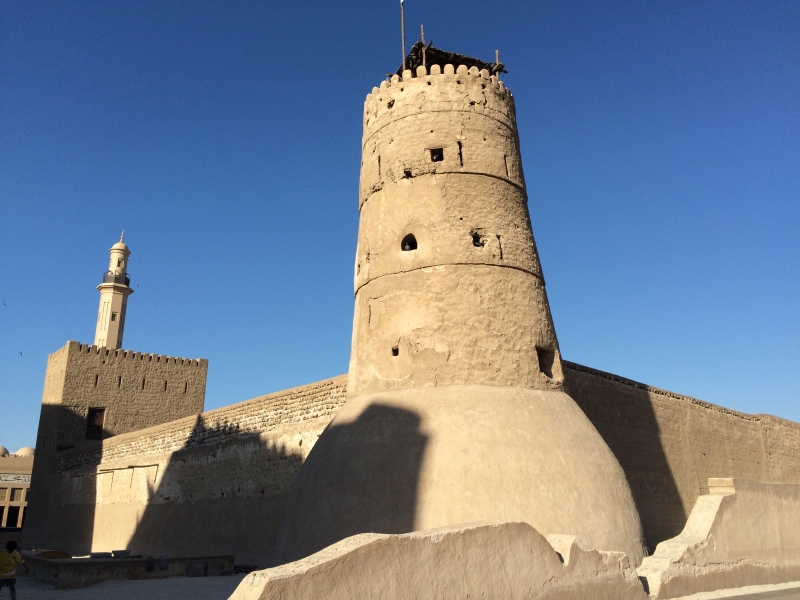
Much to my annoyance, the entrance was packed with tourists with their selfie sticks and sports visors.
I had to shimmy my way through them and into the ticket booth and prayed that they would stay out of my way (that is, by staying only for selfies and souvenirs).
I crossed the courtyard and entered the weapons gallery.
I read an overview of the fort’s history.
It was built in the 1800s but is considered as one of Dubai’s oldest structures. It was once used as the ruler’s seat of power and housed over a hundred of his personal guards. As with most forts, it served to protect the city (or town, at the time) from foreign invasion. Curiously, it did not mention a single case of any such invasion or even incarceration.
The next gallery I visited featured linear timeline of Dubai from desert to dream in less than a century.
It’s no wonder why the ruling family is so well-loved by the people.
Also read: In 20 Photos: Why Dubai is Basically #ArchitectureGoals
The late Sheikh Rashid Al Maktoum and his son, the ruling Sheikh Mohammad Al Maktoum, both made radical, avant-garde decisions which led to the miracle that is Dubai today.
The main gallery showcased daily life in Dubai: sheesha, spices, gold, kanduras, Qu’ran classes, dried dates, camels, and falcons.
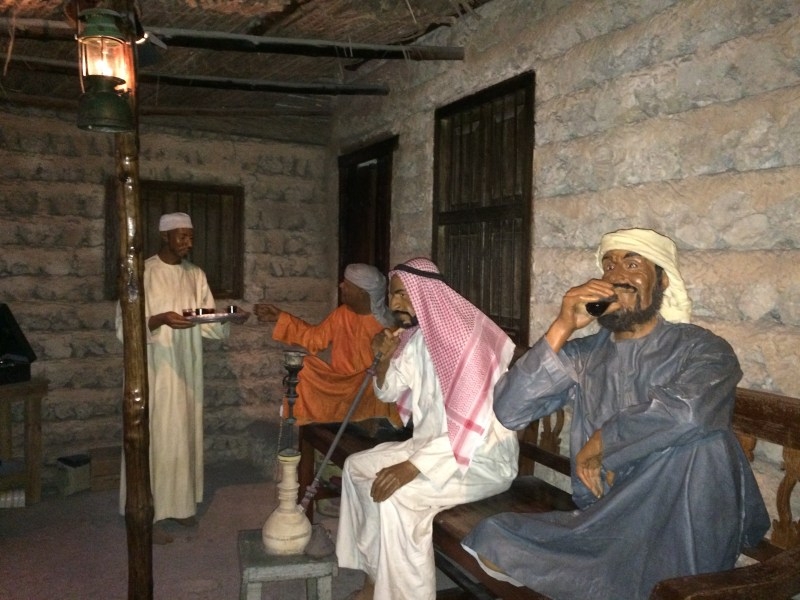
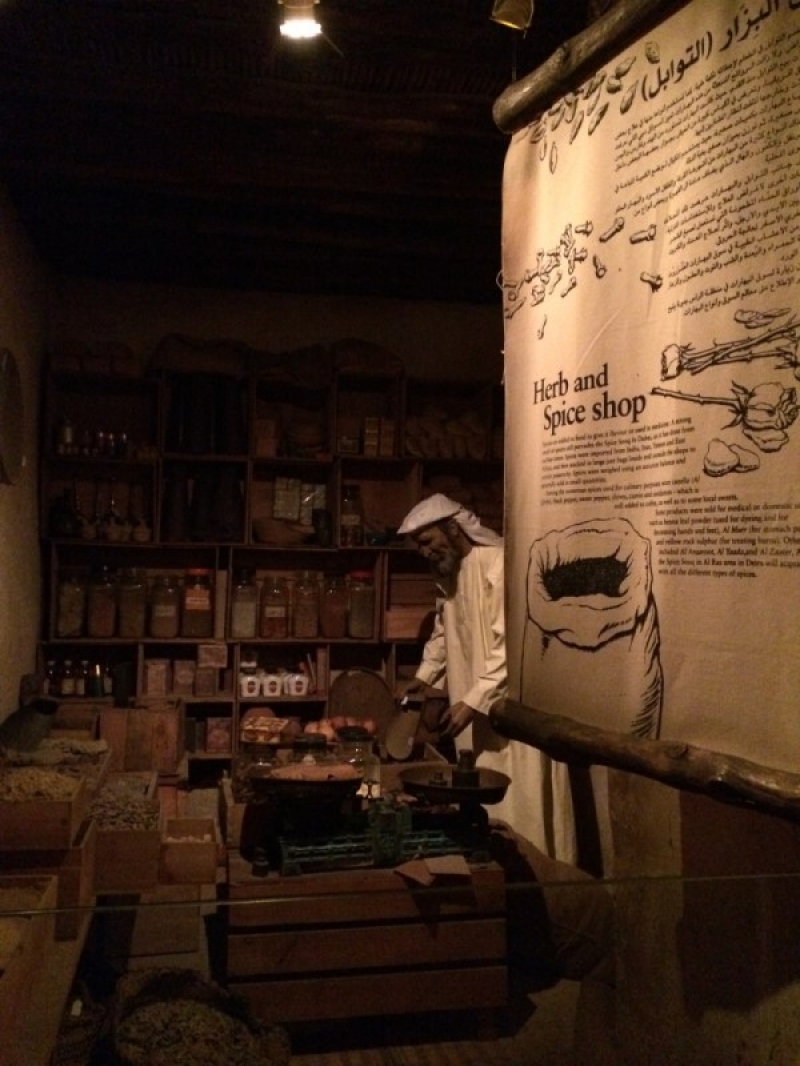
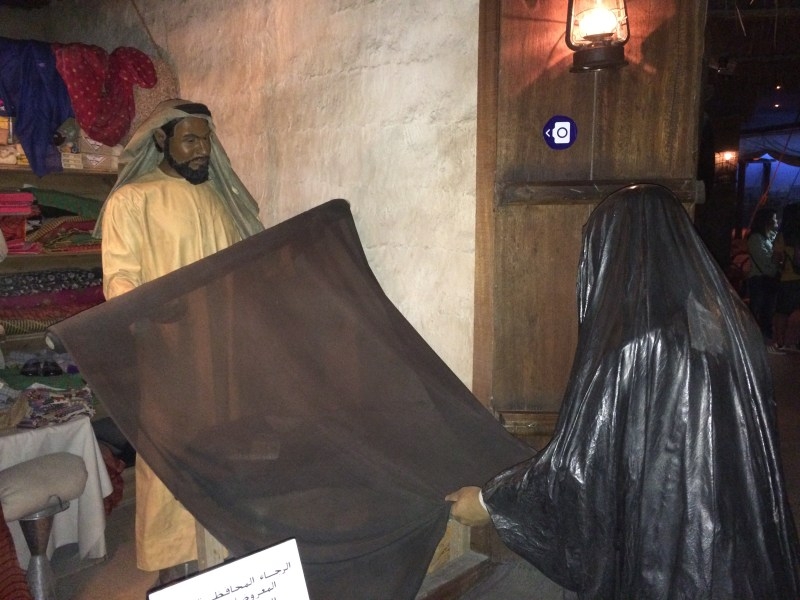
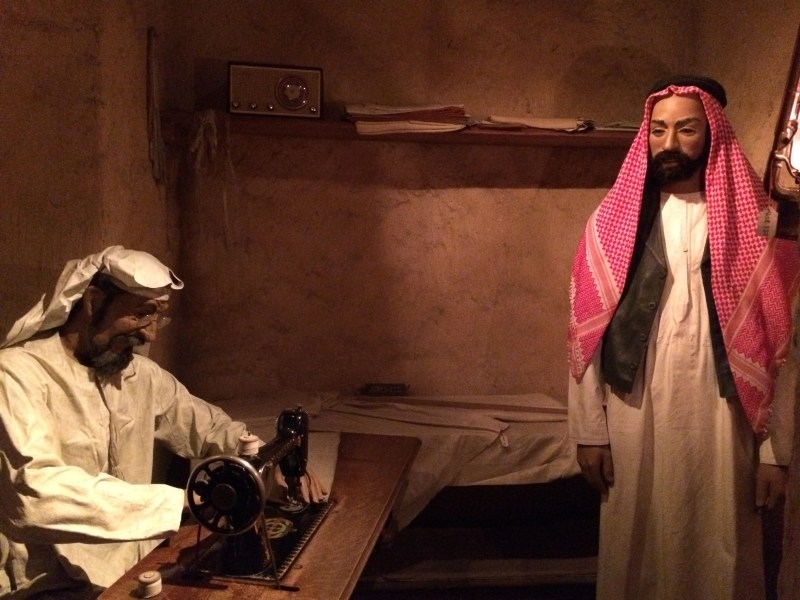
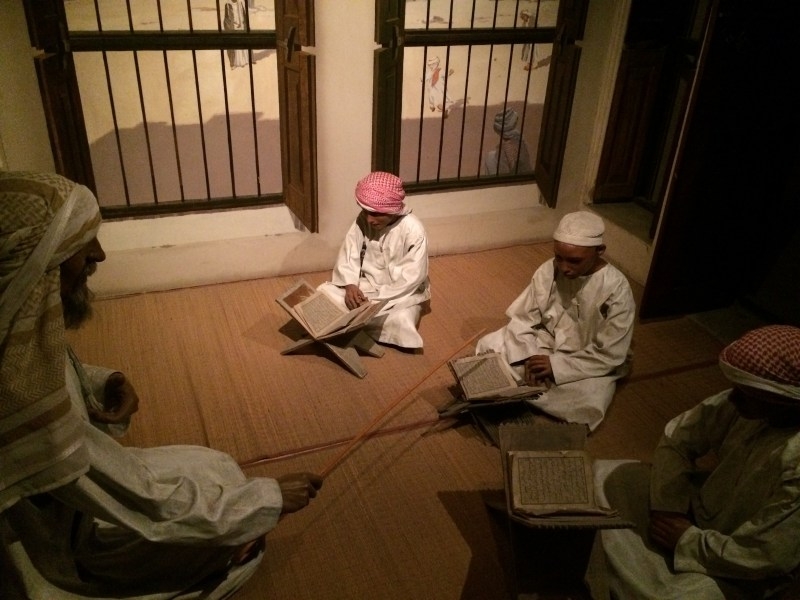
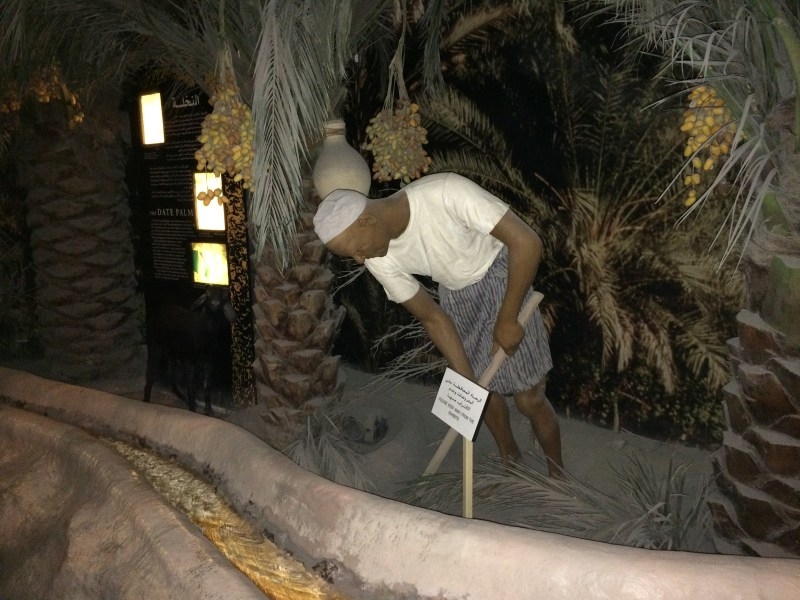
I read each of the exhibit’s accompanying descriptions as though I had fallen inside a book.
On my way out of the main gallery, I got a free copy of the Qu’ran…
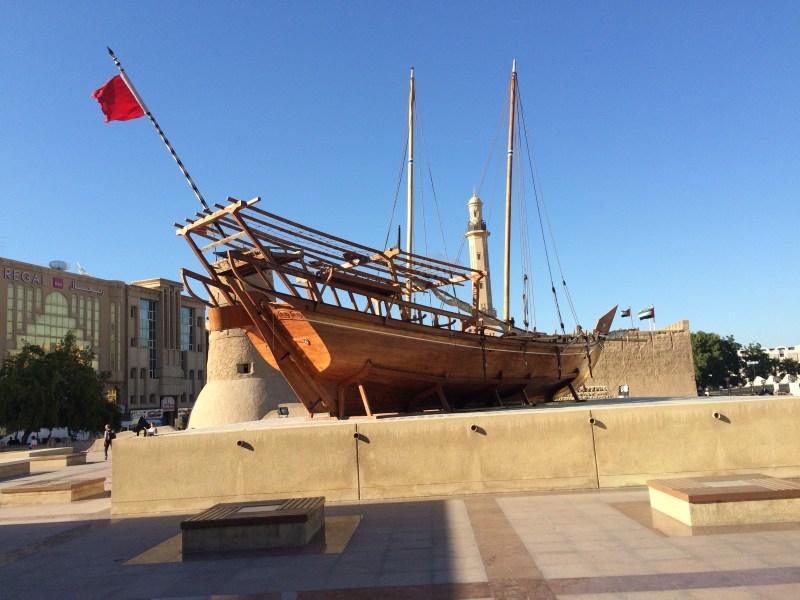
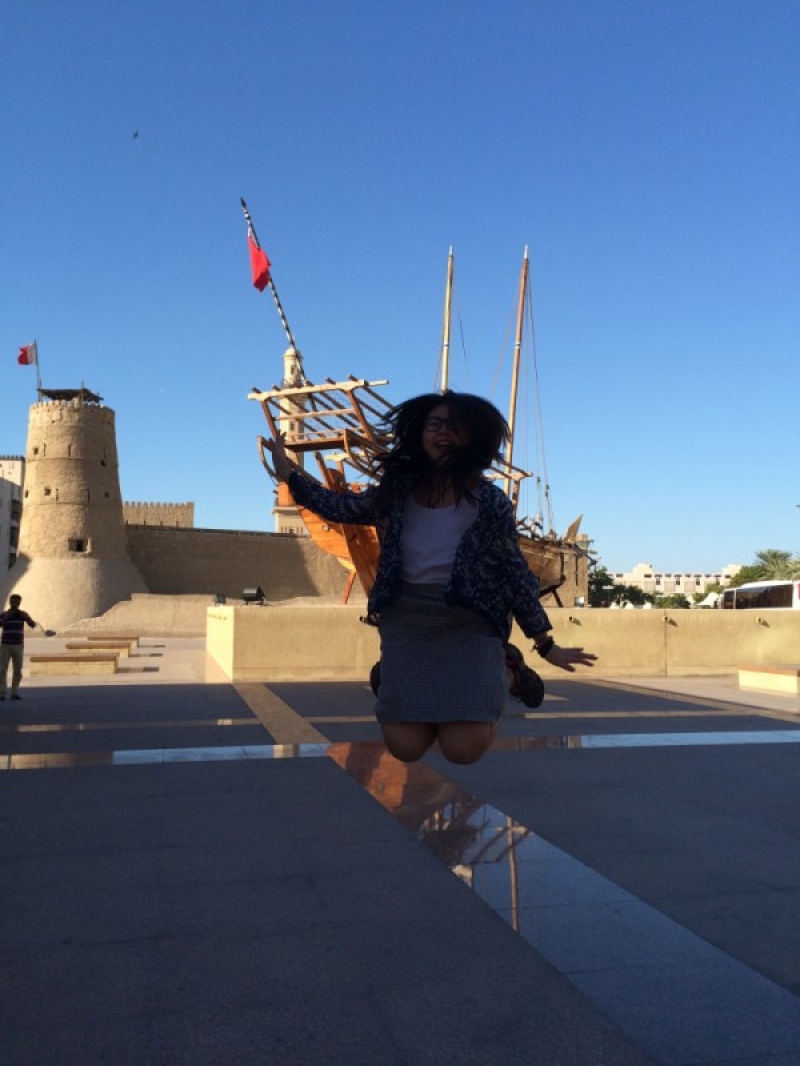
… And a jump shot taken by a tourist.
I walked a few blocks to Al Fahidi Historical District, also known as Al Bastakiya.
In the late twentieth century, it served as a residential complex for foreigners and expatriates. Enter Rayner Otter, a British architect, who got hold of information that his neighbourhood was due for demolition. Otter then set about renovating the house he was renting; thus, starting a historical preservation campaign which even captured the attention of His Royal Highness Prince Charles himself. To make the long story short, Al Bastakiya was saved, and I had the opportunity to walk through its narrow winding lanes almost thirty years after its canceled demolition.
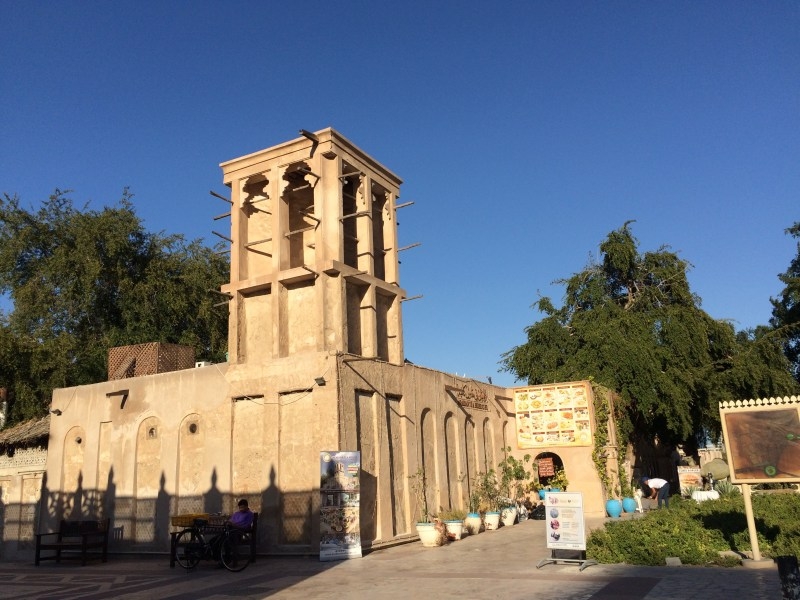
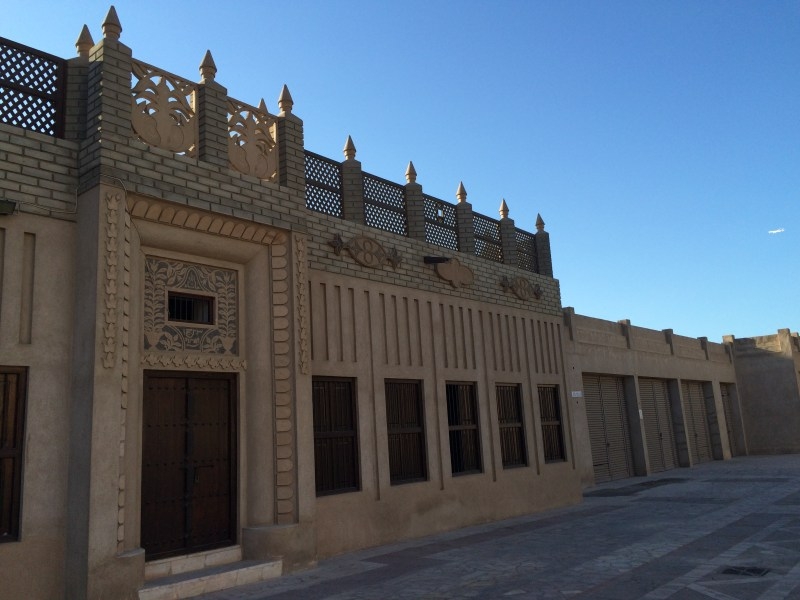
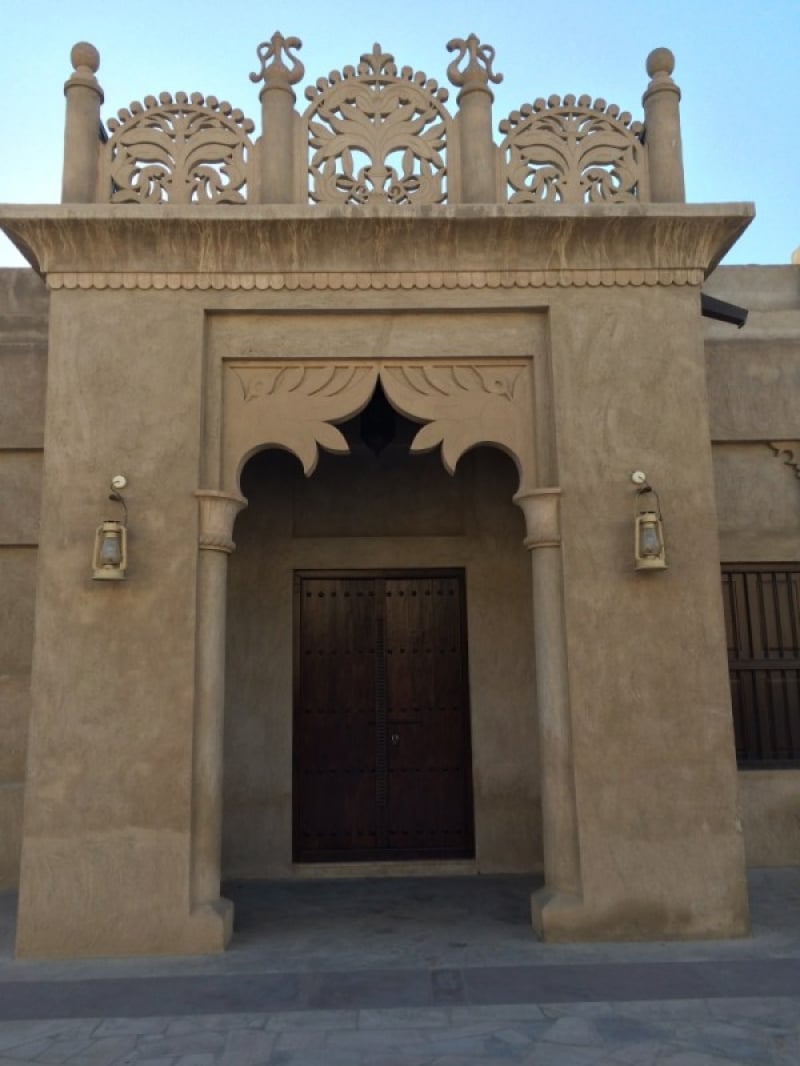
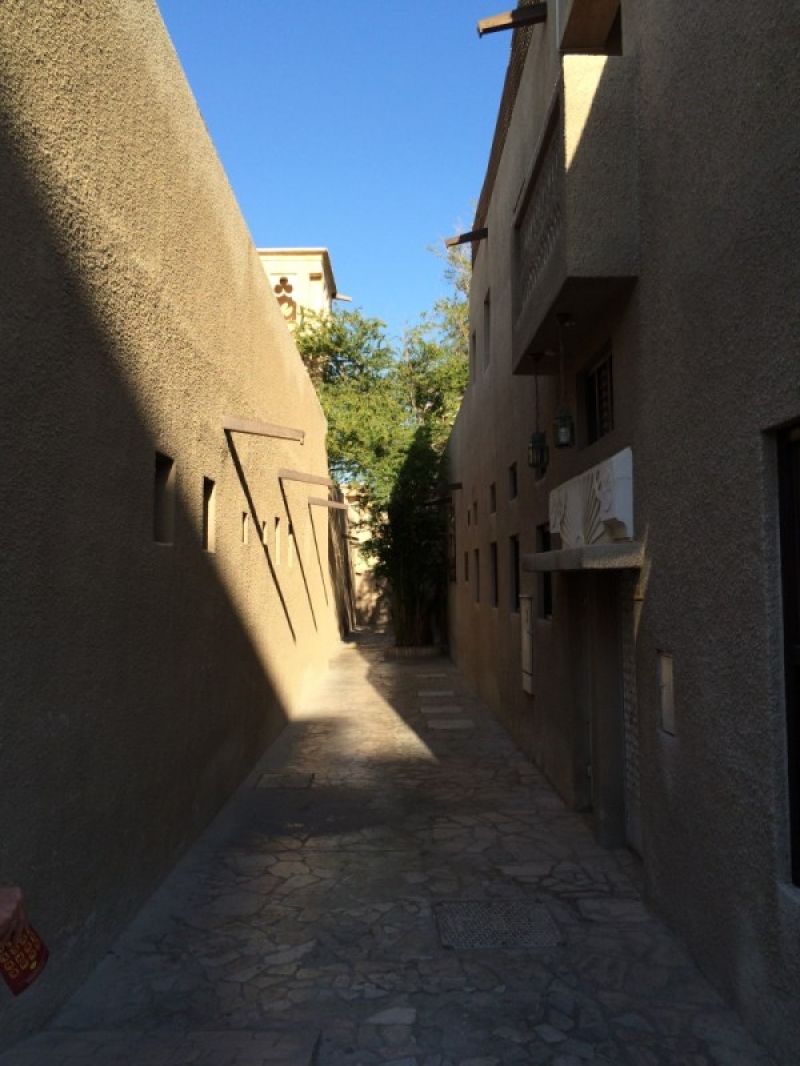
Perhaps Al Bastakiya’s most prominent feature was its wind towers.
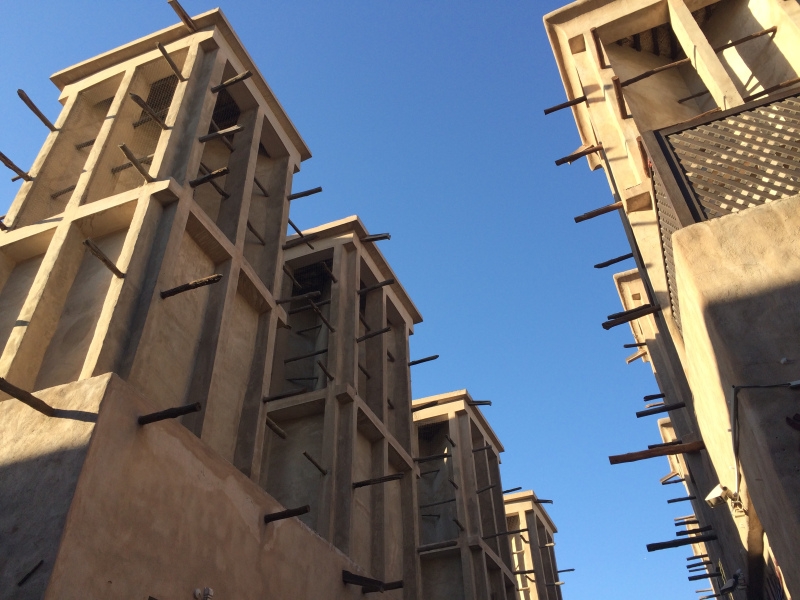
These are traditional Persian architectural elements placed on the roofs of buildings to create natural ventilation and passive cooling, suitable for the region’s arid climate.
Besides the wind towers, there wasn’t much to see in Al Bastakiya.
There were only a handful of tourists around who walked past the scattered souvenir shops.
I returned to the museum and consulted Google Maps for directions to the Hindu Temple.
I went into a narrow lane behind the Grand Mosque and quickly found myself in a sea of people clad in kurtas, saris, and bindis.
Also read: 8 Fun & FREE Things to Do in Dubai
The good news was that I found the temple.
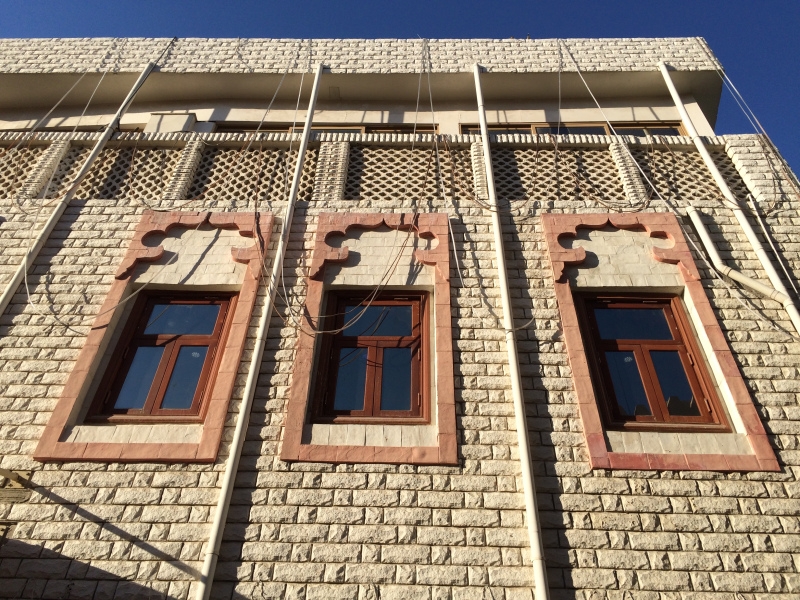
The bad news was that it was closed.
I followed a line of street peddlers and soon found myself in the heart of the Textile Souk.
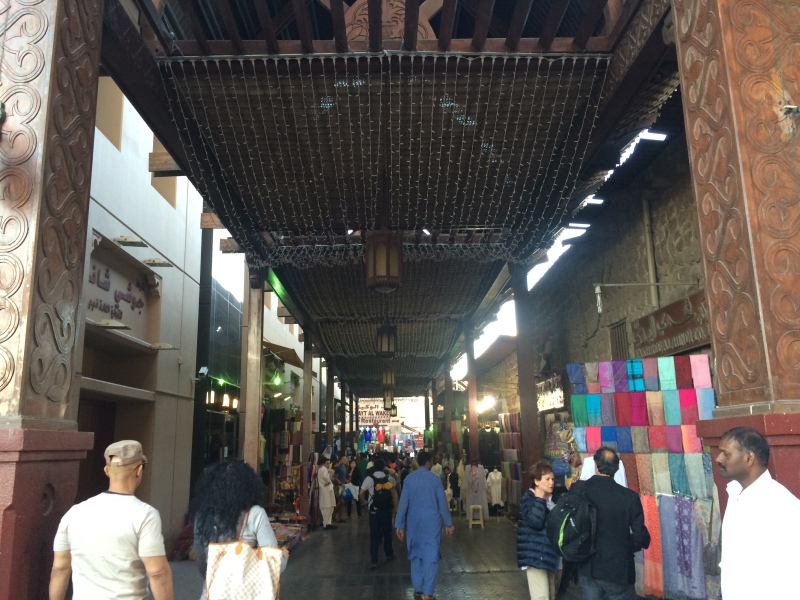
There were kanduras, ghutras, abayas, kurtas, saris, henna tattoo kits, lamps, pillows, spices, and perfumes to my left and right.
It was impossible to walk a straight line when each shop promised more novelty than the next.
The diversity of people just made the souk a livelier and happier place to be in on a lazy Friday afternoon.
Never mind the fact that I had to duck away from at least ten cashmere pashminas which were forced upon me by aggressive salesmen.
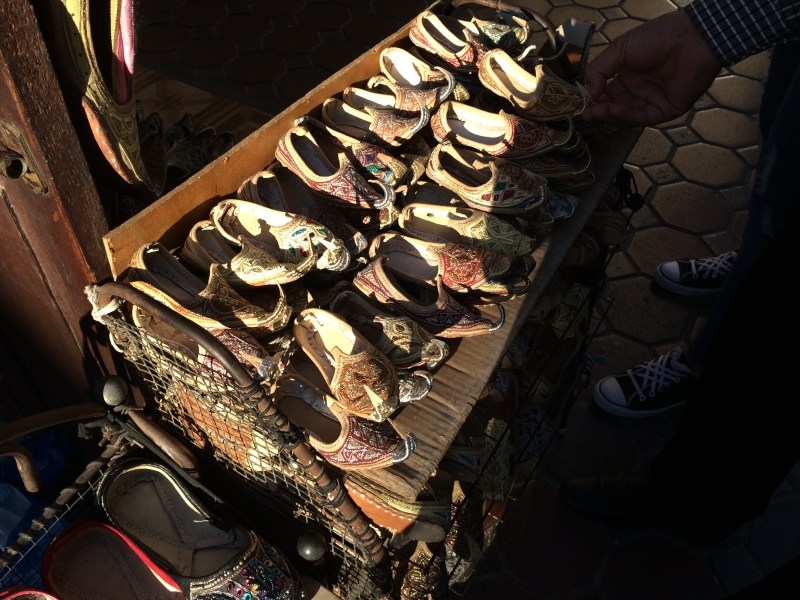
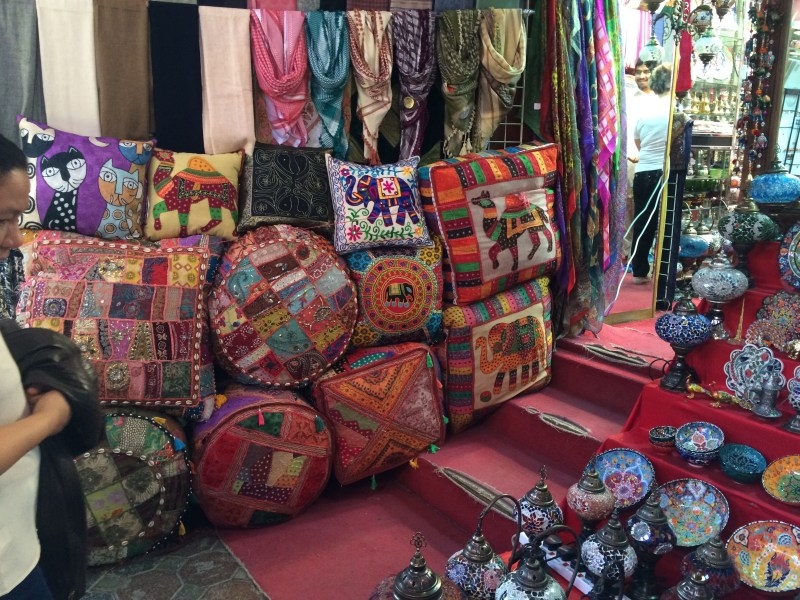
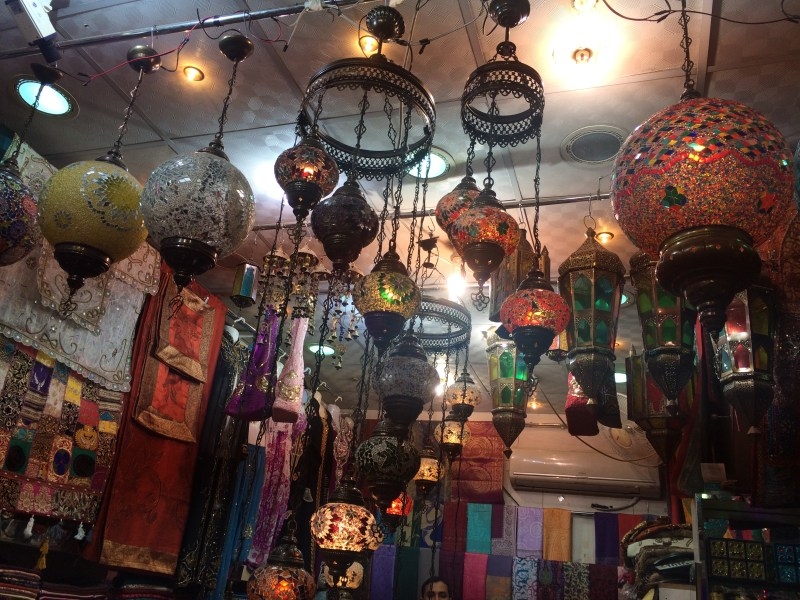
Most of the shopkeepers were males who recited more or less the same line to passing tourists.
They would greet you in your native language (or what they guessed was your native language – I even scored a “Ni hao ma?” and a “Konichiwa” to my amusement), called you beautiful if you accepted their invitation to enter their shop, or called you fat if you ignored them.
“Kumusta, magandang kabayan? Halika. Pumasok ka.” (“How are you, beautiful Filipina? Come and enter [my shop].”)
After ignoring them, they’d mutter “Matabang kabayan.” (“Fat Filipina.”)
I felt offended when I heard it the first few times, but the further I went, the more it became apparent that it wasn’t something personal.
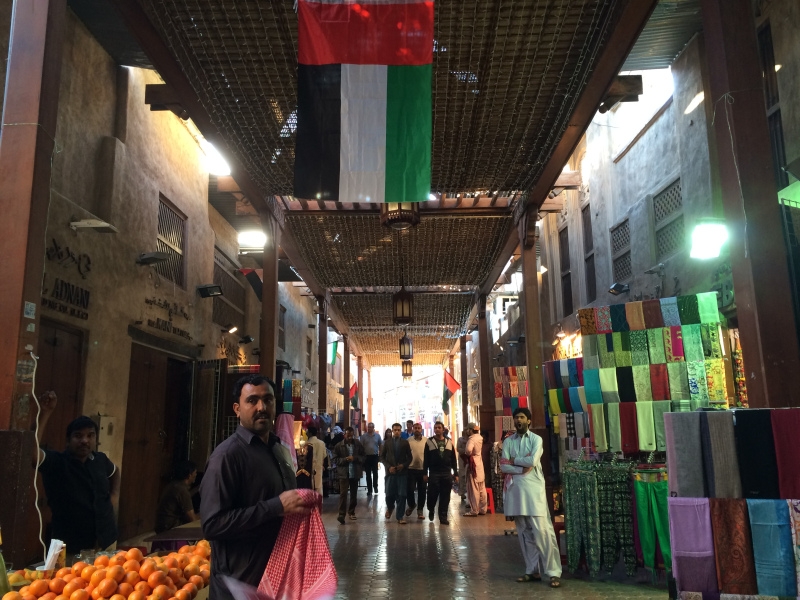
I only ever entered one shop.
I saw a beautiful maroon thawb on sale for ten dirhams.
Since coming to Dubai, I have been obsessed with thawbs.
They are so easy and comfortable to wear.
Plus, they look good in skinny jeans and jeggings.
So I bought the maroon thawb even though it was one size too big, went out of the souk, and found myself in front of the Dubai Creek.
More tourist traffic there waiting in line for their turn to ride a water ferry.
There were seafood restaurants and snow cone kiosks lining the pier.
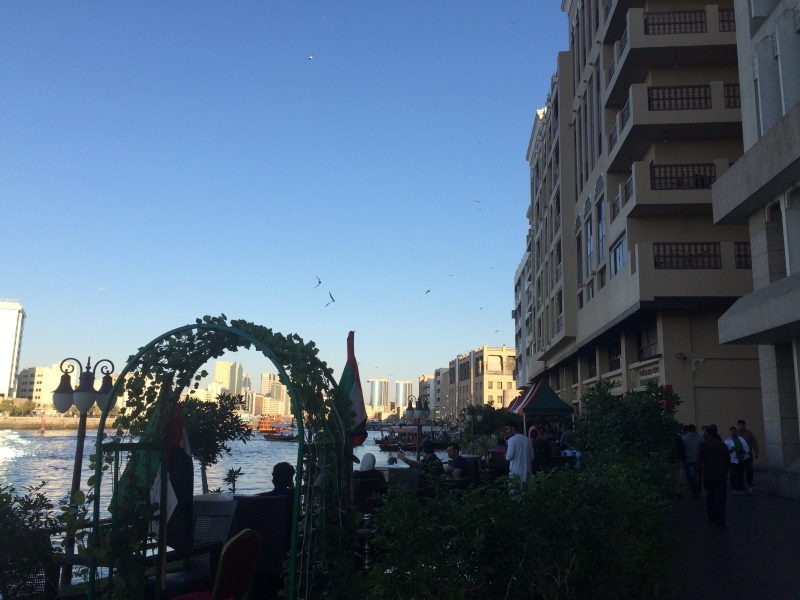
I gotta admit I wanted to check out some fresh seafood, preferably garnished on a plate of white sauce pasta, but it seemed so lonely to sit there by myself without even the excuse of a book in hand.
So then I walked past the food strip, through the park, and straight for Al Ghubaiba Metro Station to take a train home.
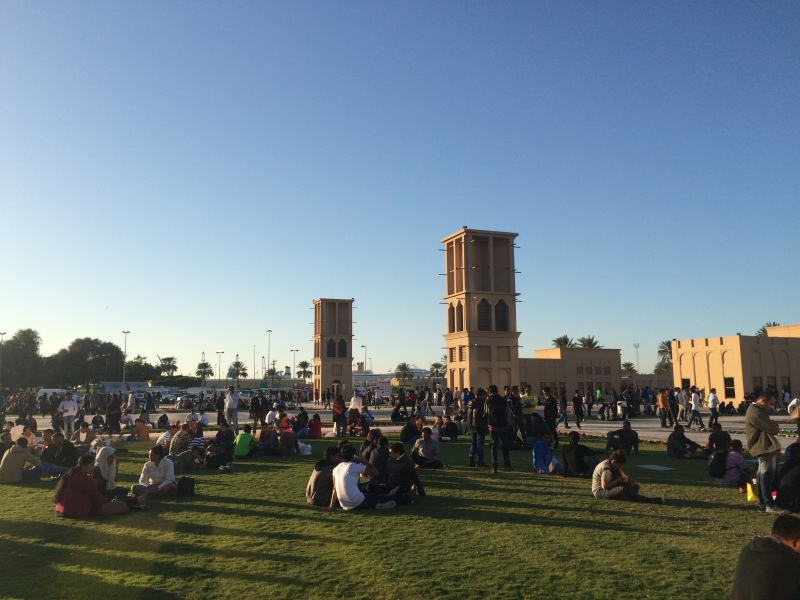
And as per usual, wandering alone did me wonders.
I was able to break a dehumanising routine composed of just home, office, and home again.
I was able to meditate on my recent experiences and what I wanted out of them in the future.
And I was able to tune out the noise of the rest of the world and lose myself in my own inner solitude.
